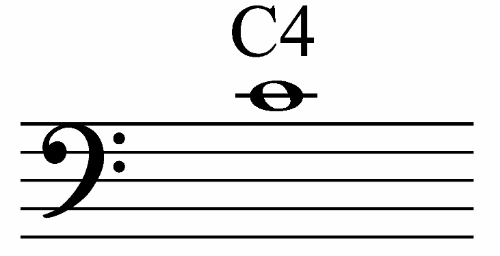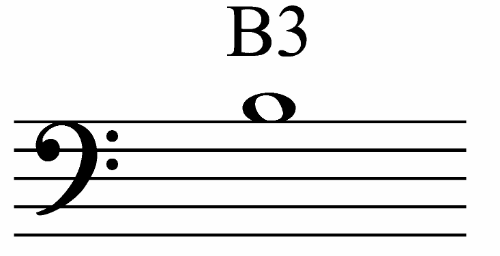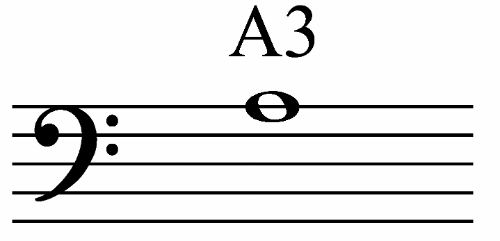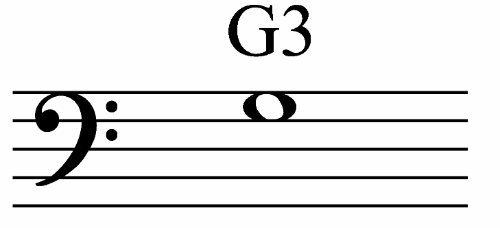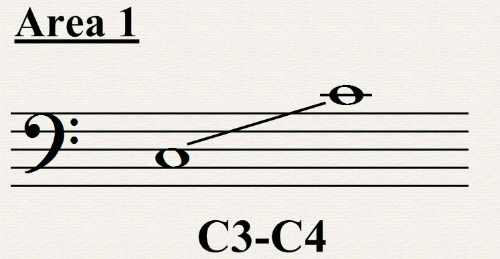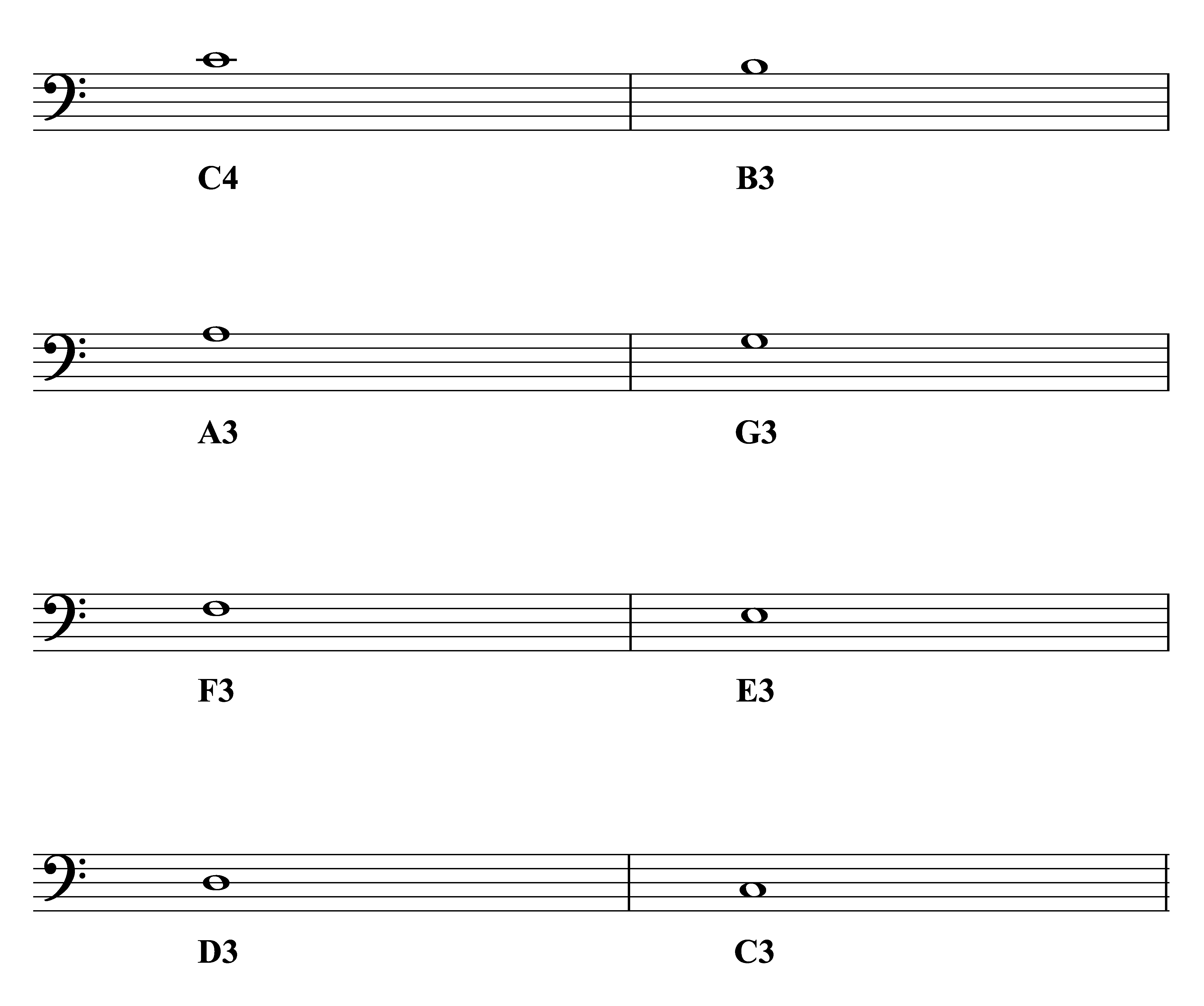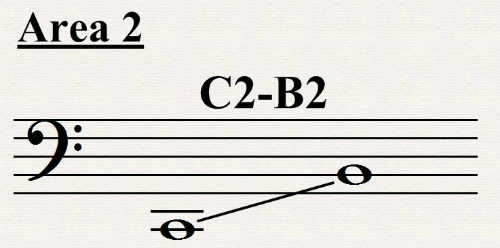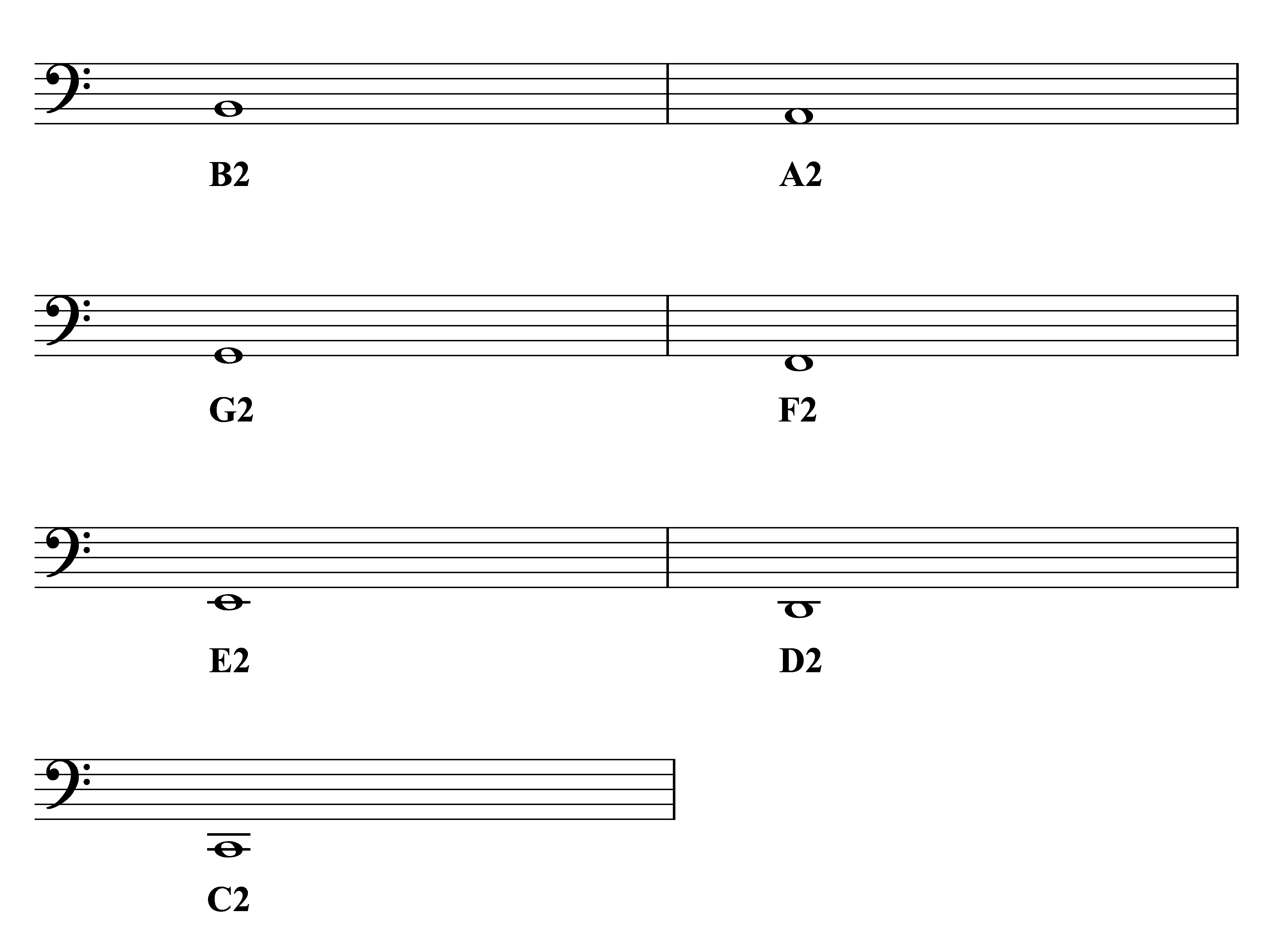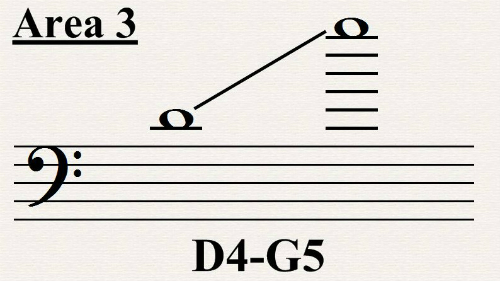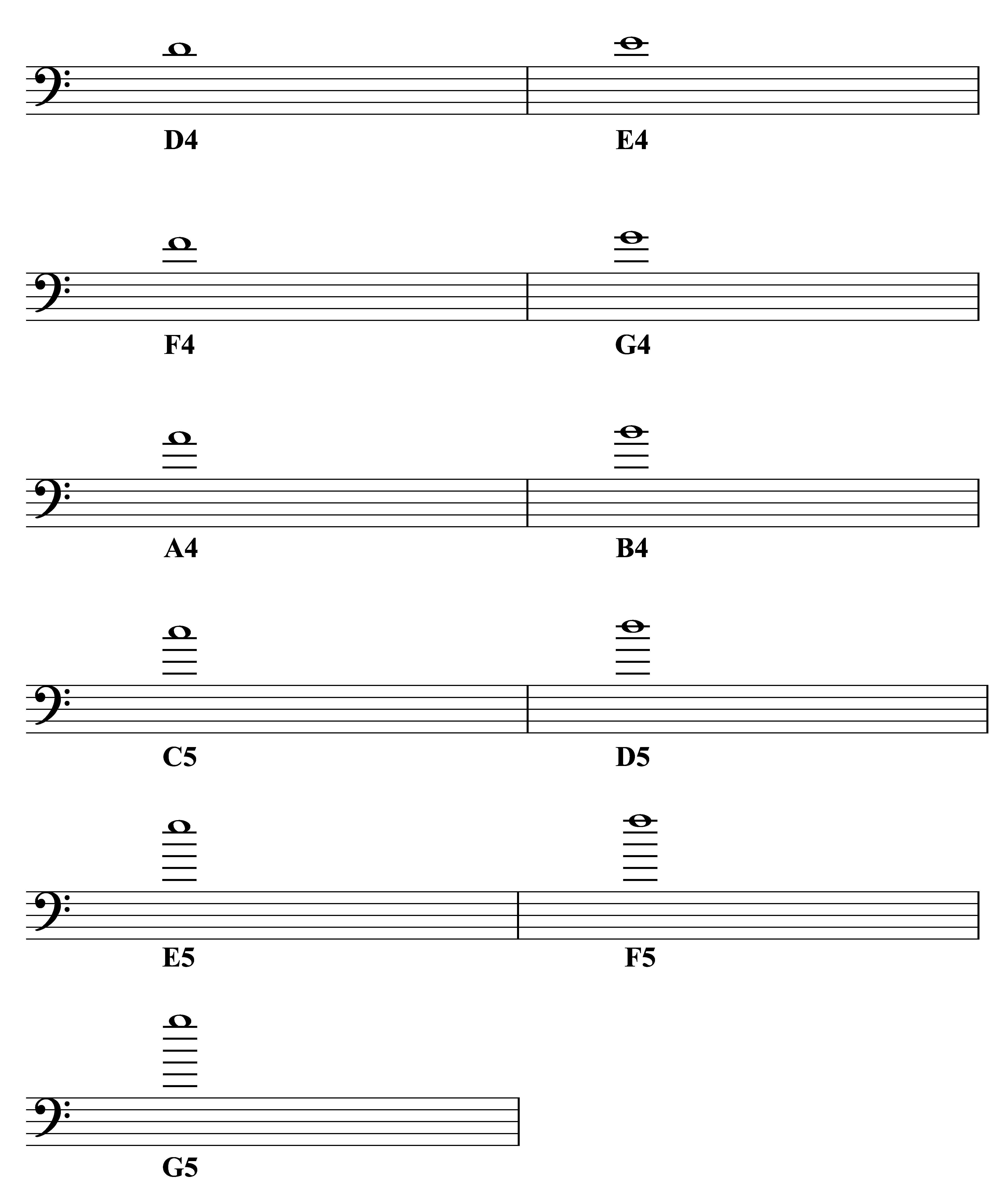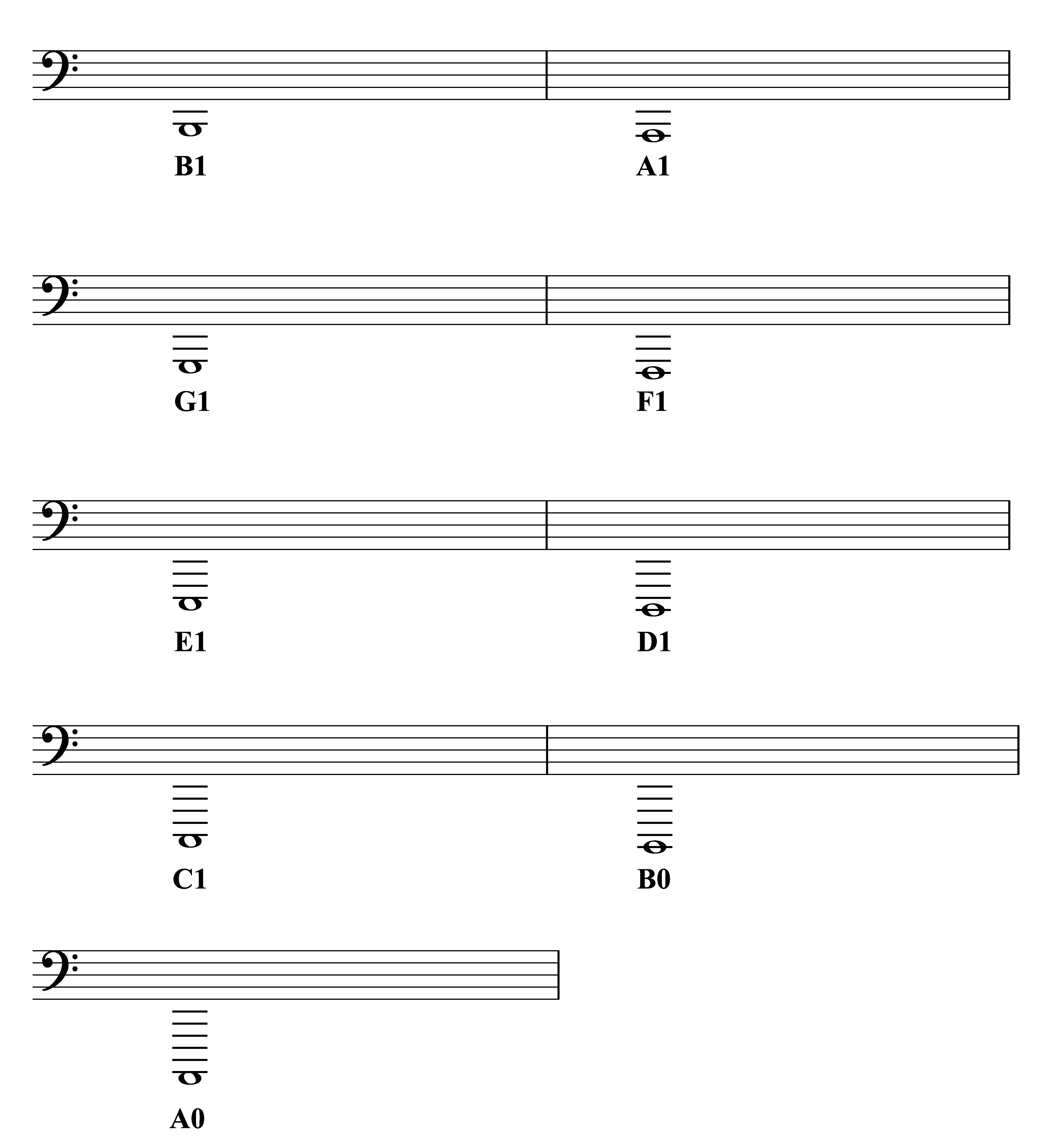Learn to Read Bass Clef Notes
If you’re interested in learning to read bass clef notes, you’ve come to the right place! It all starts right here.
Last lesson, we took an in-depth look at the F clef, including its design, and the situations in which it’s most often used. With that introduction behind us, we’re ready to get our hands dirty and dive right in to learning the notes.
As we did with treble clef, we’re going to associate the notes on the staff with their corresponding notes on the piano keyboard. This is going give us a visual way to think about the notes. Thinking this way also gives us the advantage of knowing exactly which octave register we’re in at all times (which is super-important).
(For a more in-depth introduction to reading notes, check out the lessons on The Musical Staff and Intro to Written Music.)
Bass Clef Notes
C4
Our reference point, as usual, is going to be C4 (middle C). In bass clef, C4 is located on the 1st ledger line above the staff (just the opposite of treble clef):
Here is the note C4 on a piano keyboard:

Starting from C4, we’re going to move our way down the staff one note at a time, just to get the hang of learning bass clef notes.
G3
The next note down is G3, located on the highest space in the staff:

And so on. Every line or space gets the next note, up or down (depending on which direction you’re going).
Now that we have the hang of it, we’re going to learn the rest of the notes. Just like we did with treble clef, we are going to simplify things as much as possible, by dividing the bass clef notes into just 4 areas – which should make our job a whole lot easier!
Area #1
The first area we’re going to look at is appropriately called Area #1, which consists of the notes from C3 to C4.
Here it is on the staff, and on the piano keyboard:

Below you will find a reference chart for the bass clef notes in Area #1 (going downward from C4). The chart can be downloaded here.
Area #2
Next up is Area #2, from B2 down to C2:

Here’s your Area #2 reference chart (available for download here):
Area #3
The two areas we’ ve discussed so far cover the main area of the bass clef. The remaining areas are the far extensions above and below the staff.
Let’s look at the area above the staff first. Area #3 contains the notes D4 up to G5:

Here’s the reference chart for Area #3, with the notes moving upward from D4 (available for download here):
Area #4
Finally, we head back down below the staff. Area #4 contains the notes from B1 all the way down to the very lowest piano note, A0:

And once again, here’s the reference chart for Area #4 (download here):
Learning Tip: Converting From Treble Clef
Here’s a nice trick to help identify a note in bass clef, for those who are already familiar with treble clef. (If you don’t read treble clef yet, you can skip down to the next part below.)
Pretend the note you’re looking at was written in treble clef. Then simply take the result, add two notes, and subtract two octaves.
So, for example, if a note is A4 in treble clef, it would be C3 in bass clef (we add 2 notes to A4, which gives us C5, then subtract 2 octaves):

D5 in treble clef would be F3 in bass clef. Two notes up, two octaves down:

C4 in treble clef would be E2 in bass clef:

With a little practice, you can get pretty quick at this conversion. Obviously, the better we are at treble clef, the easier it will be. However, keep in mind that the eventual goal is to know the notes of alto clef just by looking, without using any tricks.
Mnemonics for Bass Clef Notes
In case some people may find them helpful, we will mention some mnemonics for learning bass clef notes.
The following mnemonic represents the lines of the staff in bass clef:
Good Boys Do Fine Always
The bold letters represent the notes G2, B2, D3, F3, and A3, from the bottom staff-line going toward the top line:

Alternatively, you can use Good Birds Don’t Fly Away. (Or try coming up with your own, if you want.)
There also a good mnemonic for the spaces of bass clef:
All Cows Eat Grass.
That’s the notes A2, C3, E3, and G3, from the lowest space in the staff to the highest:

Although mnemonics can be helpful, they also have a few major downsides:
- They don’t tell you the octave register number of the notes, so we have no idea where we are in relation to a piano.
- They don’t deal with any notes in the ledger lines, or in the spaces above and below the staff (which make up more than half of the notes).
- They could become a crutch to rely upon, instead of actually memorizing the notes.
In another lesson, we’ll learn several excellent practice techniques. It’s important to find 1 or 2 techniques that work for you, so that you can start practicing every day. Even five minutes a day will work; it’s more important to practice consistently than it is to practice for a long time.
Image Attribution:
L1000876_v1 by Sigfrid Lundberg ©2012 CC BY 2.0
